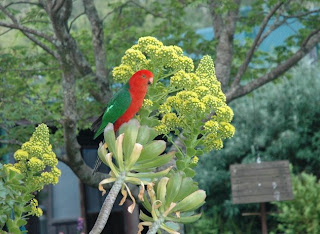A weekend away.
The car headlight swept over a hazel hedge as we pulled into the cottage. A visitor from overseas, transplanted into another land. Just like me. Too late for catkins, too early for nuts – a mid-stage in life. Just like me.
Torch light led us to the front door, where a bird awoken from its sleep decided to join us indoors. A Welcome Swallow indeed, although the limey gift on the floor was less polite!
The night was full of darkness, stars and the calling of frogs. Less than an hour and a half and a whole world away from Melbourne. You could see the outlines of trees, smell the damp mud by the dam, taste the air, but detail was hidden – detail was a surprise waiting for morning.
We awoke to a silence full of bird song and bright sunlight. We were not where we normally were. The quality of silence was different. Neither the muffled silence of snow nor the false silence of the city, this was different. It was a silence full of sounds, distant, close, clear and dull. This was the hum of a place alive with life.
Breakfast was eaten looking into a small valley, with a dam to one side and thick bush to the other. A kookaburra landed on post by a dam rippling with tadpoles and glided down to a small jetty to fish. Giving into to its history – kingfisher indeed. The air was full of song and my head was full of names. A catalogue of birds, some far away, some close at hand, sometimes right, often wrong.

When you see some animals close up you understand that there is a gulf between you and them that can never be crossed. But you can imagine that there is intelligence behind the eyes of a parrot. The tilt of its head, the level gaze, the way it looks back at you rather than just through you. These are animals to be cherished and welcomed. The world would be diminished without them.



But here the song was full of others songs, and the birds seem safe. This is a bird of deep cover, a skulker in the undergrowth, given away by its song and the scratchings on the ground. It rarely poses for pictures.
These birds, the parrots, the bower birds and the Lyrebirds were doing what they do to reproduce. But without food reproduction is futile. Young need food and nesting females often need help. Life for one animal often means death for another, and here the Kookaburras brought death to smaller prey. We stood at the bottom of a long sloping field and a shape flew towards us. Growing larger and clearer is flew at us at head height , until at the last moment it flared its wings and stalled and a Kookaburra dropped on to a branch. This must be a vision to strike fear into many small animals.
And animals not so small as well. Later that day we noticed a Kookaburra in a tree over the river, with something in its beak. Something rather large. It was flicking its head to one side to beat the animal against a branch. This is what passes for humane slaughter in the world of giant kingfishers. Pluck your prey from the bank-side vegetation and beat it to death on a branch. The animal was a mammal of some sort, rat sized, but with a shorter tail and finer fur – possibly a bandicoot. But it was hard to tell because of the distance. The frequent, 
We met a wombat on the drive home on Saturday night, uncertain in the headlights – finally making a dash across the road. That night we fell asleep again to the chorus of frogs, but the Swallow did not visit.

As we drove away on the Sunday morning it was clear that this little cottage was surrounded by an ocean. An ocean of trees. But this is an ocean that can burn, and in a fire the waves that would break over it would be waves of flame, about which nothing could be done. Tragically, less than a year ago, on the other side of the hill, this is exactly what happened.





Comments
Thank you!